In an old quarry in St. Luke's, a community garden grows
St. Luke's community garden started in the pandemic. In less than two years it's transformed a place that was primarily used for dog fouling.
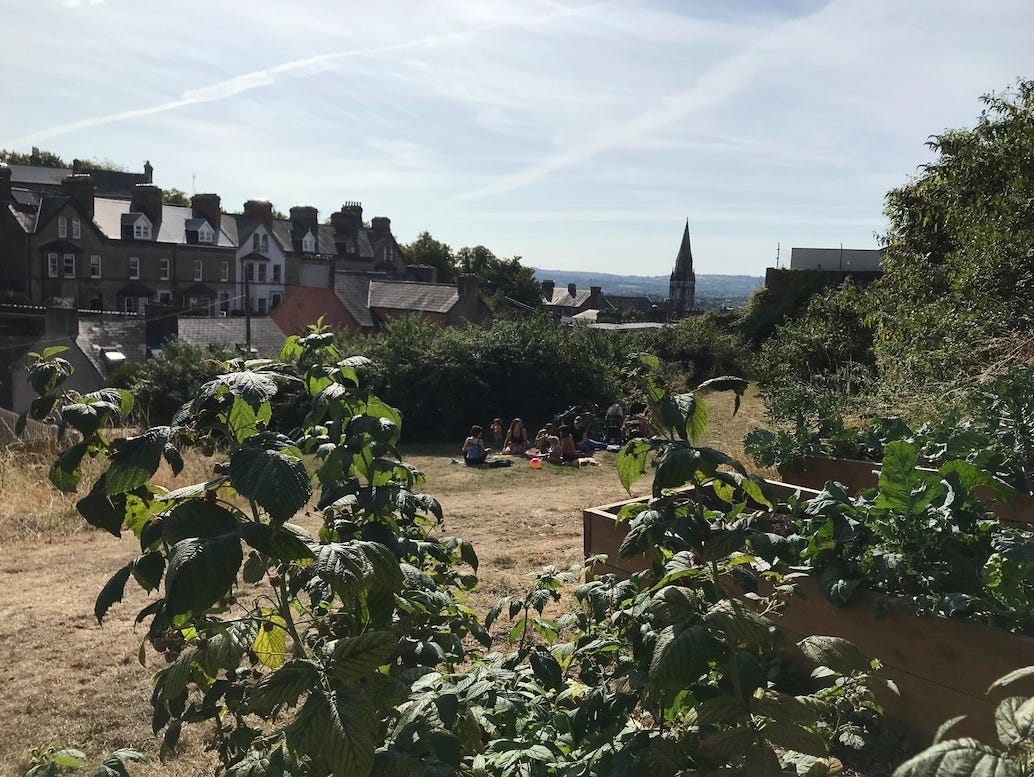
It was the kind of magical weather day in which Cork sparkles: blackberries were ripening on the briars, the potatoes had been harvested, the grass was brown from weeks of sun and no rain and slowly, and in ones and twos, mothers and toddlers made their way up the small incline to a grassy knoll in St. Luke’s community garden just off the Ballyhooly Road on the Northside of Cork city.
From the former quarry site you could see the spire on St. Luke’s church pierce the horizon and further below the water glistened in the harbour.
However, unless you knew about the community garden, located in a former sandstone quarry, you’d easily pass it by.
Carla Pittam was first to arrive with her dog Croiadh. She had just dropped her young son to school, and she was ahead of me when I arrived, pushing her buggy, a large plastic bucket and some gardening tools past the tall sunflowers reaching over each other to soak up the sunlight at the entrance way.
That morning Carla didn’t get a whole pile of gardening done, as she spent her allotted time explaining to me about the short history of one of Cork’s newest community gardens before a group of three other mothers, their toddlers and nearby residents converged on the community garden.
They were all there to peruse the garden, play, chat and plan for an upcoming "circular day”, in which locals will bring clothing and footwear they no longer need but they can pass along. Carla poured out coffee from a flask she had brought.
Originally from Rome, Carla has been living in Ireland for 24 years, much of it in Cork and she’s one of the driving forces behind the community garden in St. Luke’s. She had been coming to the former quarry on and off before her son was born. It was an unclaimed space where nature had some hold on the urban landscape, and a place to walk her dog. It was, and is still, a place used by dog owners to come and leave their dogs shit freely. Drinkers come by too.
But since the garden has been up and running, and with the addition of a few notices from the council warning dog owners to clean up after their dogs, there’s been a reduction in the amount of dog fouling left behind Carla says.
Even the drinkers are doing their bit, usually tidying up their cans and bottles when they’re finished.
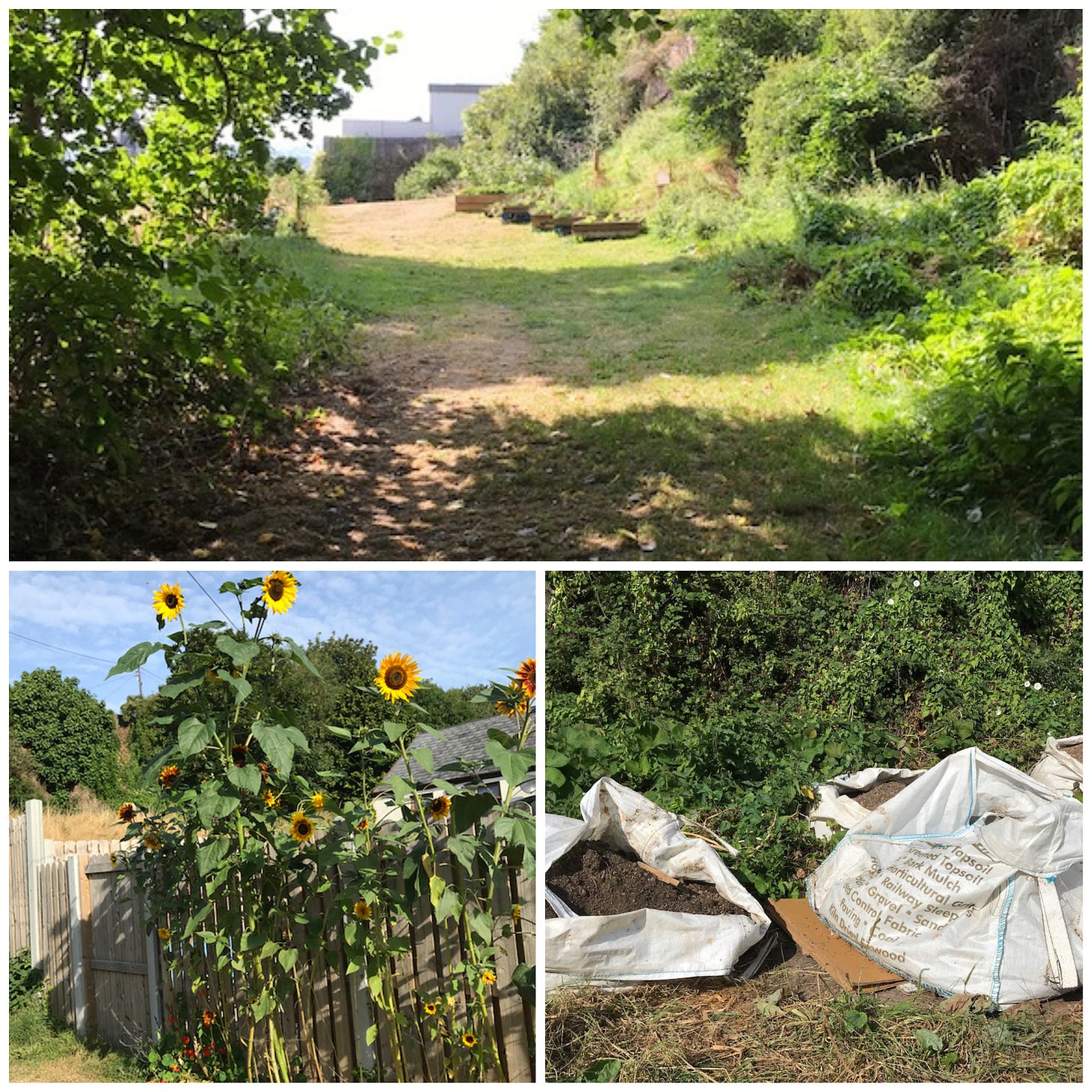
Community gardens have to work with what they have, and in many ways St. Luke’s is a challenging one.
Given that it’s a former quarry site, soil is thin on the ground (literally). The plants that have taken root here are also a problem. One part of the garden is home to Japanese knotweed, an invasive species that has run riot across Ireland over generations. Elsewhere, buddleja, also known as “Butterfly bush” grows bountifully, its gangly branches reaching everywhere, dominating like an alpha male. The garden also has zero storage structures: gardeners must bring and take their tools each time, and there are also no benches nor seating of any kind for when they hold public events, or just want to rest up a while.
The community garden is also a dumping ground. Rubbish is continually thrown from Alexandra Road which runs behind the steep rock face of the garden. Carla recalls doing yoga one morning when a big bag of gone off food landed down beside them. She can still recall the stink.
To get round the various obstacles, both natural, bureaucratic and otherwise, the local team of volunteers have been inventive, pragmatic, and above all they are trying their best to be sustainable in the approach to how they build the garden, and their community.
To wit, Carla shows me the nearly half dozen bags on a flat plane of grass just next to where yoga is held on weekends when a local yoga teacher can make time for it. The massive bags came full of topsoil for their spuds, but instead of building planters, or dispersing the soil on the rocky ground, they emptied the bags, mixed the soil together and transferred the lot back into the bags before setting their Queens and Roosters.
Carla said they had a bumper crop, and a pile of fun harvesting them.
But first, a concise history of the community garden and how it grew, and nearly didn’t.
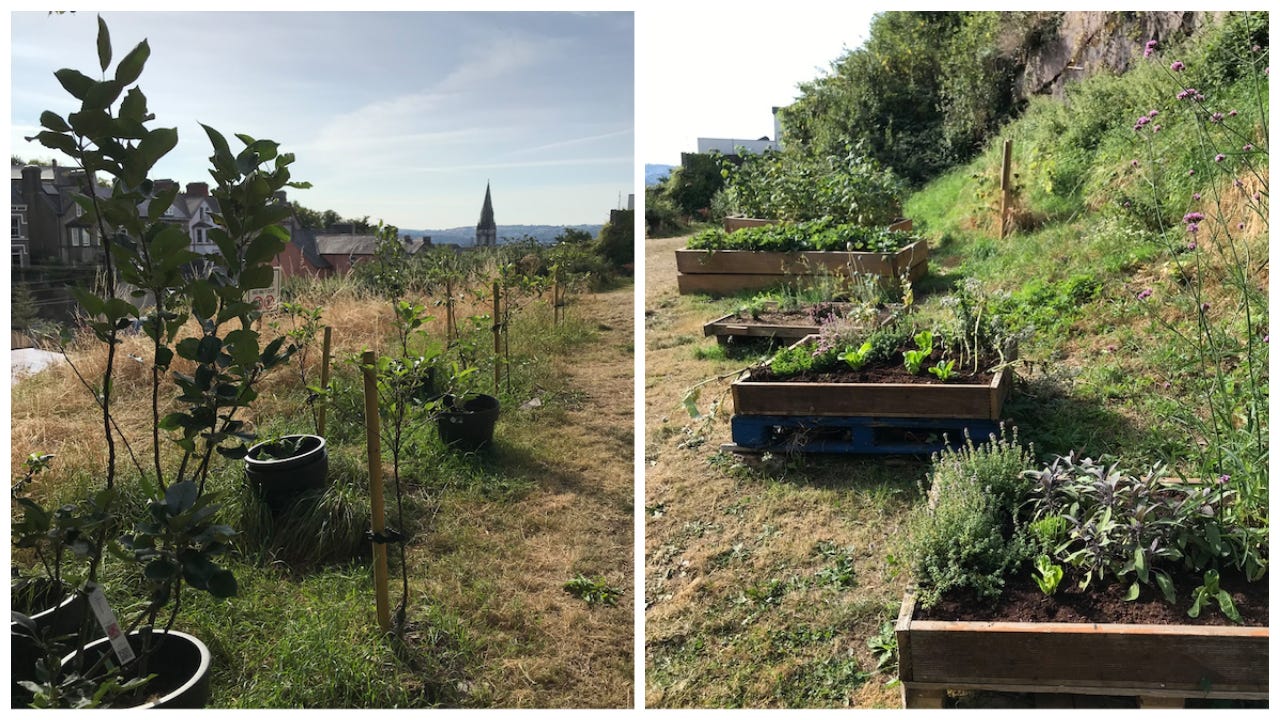
Please, can we have a community garden?
Carla has always been interested in gardening and growing. She has, as she told me in a lovely Roman meets Cork-inflected accent “a lovely south-eastern facing garden”. But the idea for starting a community garden was, well, that communal aspect.
“I knew that there wasn’t anything in the area and I thought, ‘you know what, I’m on maternity leave and I have a little bit of time - why not just look into it?’”
Famous. Last. Words.
Carla began all this in the first year of the pandemic, so the project started with emails, which led to more emails. It was an awkward time to start Carla admits, but as she admitted there’s never a good time to start. However, through a network of connected people, such as Maria Young from Green Spaces for Health, Carla got going.
The site we’re on now, the old quarry, was her first and favourite venue for a community garden for a few reasons. It’s nearby her home, it was unused, and unloved. But Carla saw it differently.
“I used to come here and walk my dog. And I always remember thinking that this is so beautiful, but it was always covered in dog poo. So when I had my little boy, I stopped coming here because he was at the crawling stage. And it was actually just dangerous. So I stopped coming all together. And I thought, what a waste of a lovely spot. I can't come here because there's dog poo - no way.”
So then I kind of noticed that not that many families were coming here and I thought, ‘hold on a second. This is a lovely little park a park on the edge of the city,’” Carla continues.
Carla listed off other parks nearby such as the Glen and Railway Park, but also Shalom Park further afield, but she had a fixation on the former quarry site.
“I just thought this would be a lovely park to activate, and you know a community garden was a good starting point as we would be growing vegetables and everyone needs to eat.”
From the start Carla had in mind the community, but a space like this, even if it was unloved, well many people had a view on it, including some of the residents nearest to the former quarry and the City Council.
Carla had first contacted the council in search of allotment spaces, but she was told that would take two years due to the long waiting list.
That was the catalyst to get her going because “she didn’t want to wait two years.”
However, what the emails did start is getting her connected with those involved in community gardening, green spaces and public health.
If, as the cliché goes, it takes a village, well it takes a lot of people in the right networks to raise a community garden, and Carla was helped there by people such as Maria Young, Micheál O’Connor from Health Action Zone, as well as local councillors such as John Maher and Oliver Moran, and various members of the city council. Further up the road the gardeners and community at the Glen have been “an amazing support” Carla said.
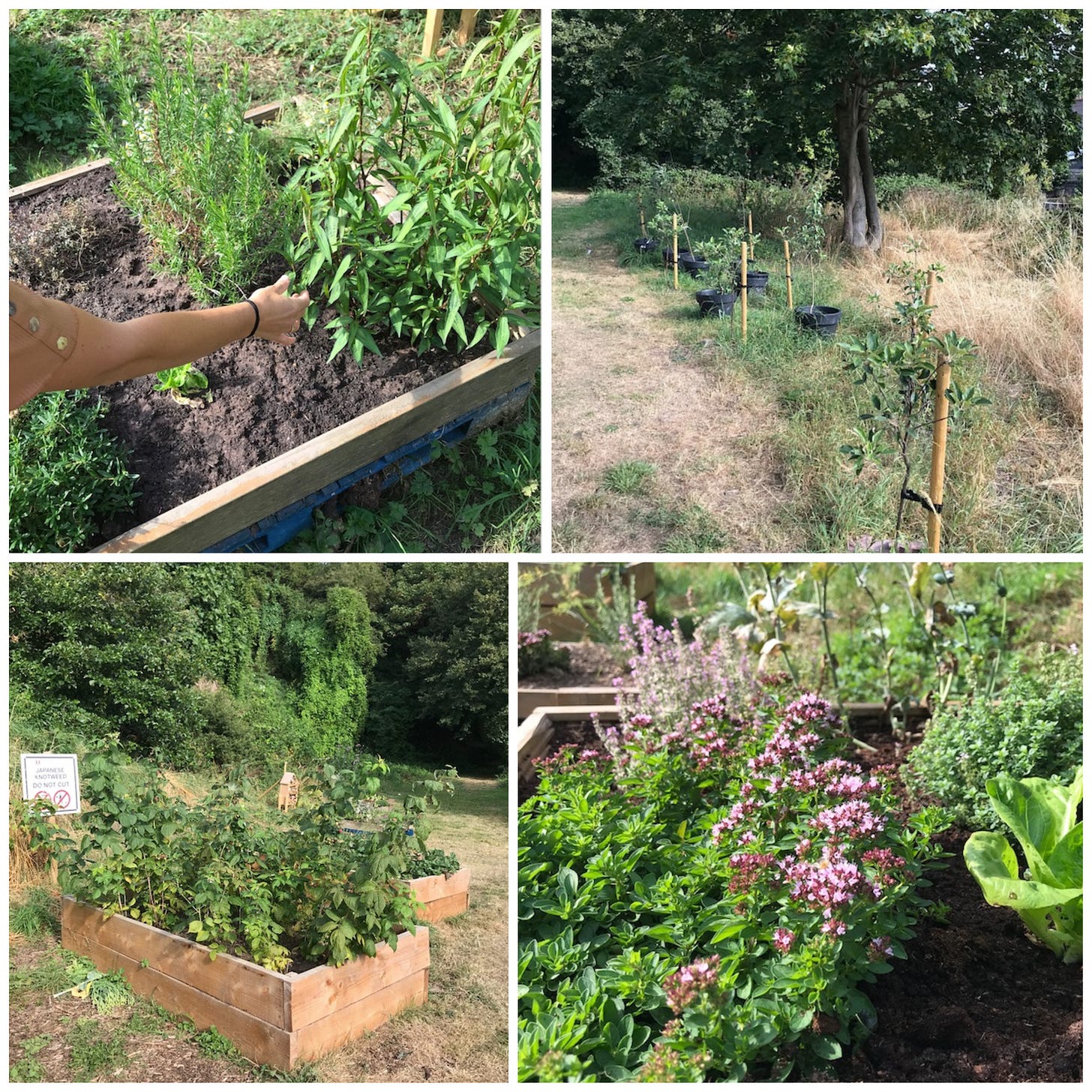
At one stage the community garden was a complete non-starter when the council pointed out that Japanese knotweed was growing in places, but behind the scenes there was work going on to get the garden up and running.
Carla still remembers the phone call she got from Cllr Oliver Moran, a local Green Party councillor to tell her the community garden was going ahead. She responded with a word that rhymes with truck + off, such was her disbelief and instant happiness.
To say she was ecstatic undersells it, but she worked her backside off to make it happen. And she’s since been joined by a group of volunteers who pitch in and who all want the garden and the community to grow.
They started by removing weeds and rubbish that had built up over years of neglect, and from there they planted some pollinator plants.
“We actually put in a few plants of kale and kholrabi just to show people you can actually grow from any place,” Carla says.
We’ve moved up to the higher ground where there are about half a dozen planters filled with everything from kale to cabbage, lettuce, turnips, kohlrabi, broccoli, sage, chives, lemon thyme, marjoram, fennel, parsley, more thyme, mizuna, and a really pungent Vietnamese coriander plant. Beside us are apple trees and a pear tree which will be “going into the soil shortly” in an area where knotweed has not taken hold.
Carla tells me they had loads of strawberries and raspberries this summer. For the winter they’ll look to growing garlic and onions and some types of lettuce.
As I listen back to the audio recording while Carla points out the vegetables they are growing I can hear birds chirping and tweeting. The sound of cars too can be heard from the nearby Ballyhooly Road, and while it’s one of the most offensive clichés known to journalism, this is a little oasis away from the cars, the roads and houses which crowd around.
The gardeners at St. Luke’s usually meet every Friday and then the first Sunday of every month, and in between there’s scheduled meet-ups. To use a gardening metaphor, the organisation is quite organic.
“We’re doing things slowly, and we assess. We do a little bit and assess. And we have people coming and going with different meetings and people come up with different ideas and suggestions, and so the pace is quite slow, but nonetheless we’ve been enjoying what we’re doing,” Carla says.
What’s missing?
To the visitor, you can’t help but notice what they don’t have at the community garden in St. Luke’s: a glass house, a tool shed, cripes even a few benches.
Carla and the volunteers are well aware of what they haven’t, and of course they would love to have all these things too, to activate the space to use Carla’s idiom of choice, but it’s a delicate act.
Carla said a storage shed would be a life-changing addition, and you can see her point.
Not all locals are in favour of activation Carla said, pointing out the well worn advisory that benches could lead to anti-social behaviour. But, as Carla asks: “What about dog fouling? Surely that’s anti-social behaviour”.
As she also points out the benches would be great “for the inclusive side of things.”
“Some people because of their mobility, just walking up that hill, they’re actually really needed.”
As to whether benches will come, Carla says they’re “open to all sorts of progress.”
I joke with Carla that some night I will come by and erect a bench under the cover of darkness. Carla laughs and says she’d probably get arrested as she’s the council’s go-to woman on this park. (Rest assured though the chances of me erecting anything that wouldn’t have collapsed by sunrise are are slim to none).
St. Luke’s community garden raises an interesting question though on the role of the council. Clearly, Carla and the team of volunteers have been supported by the council in getting the garden up and running. They’ve also been policed, as when they had to take down an admittedly giant bug hotel that had grown storeys high: the council, Carla said, feared it would be set a light. A swing that was hung over a tree also had to be removed.
But, the community garden here and the ones in other parts of the city also point to what could be read as a failure on the council’s part. What, if any, plan did the council have for a site they have owned for decades? Where is the imagination and the will to see public spaces like these transformed? Or, are we better off if these transformations happen from the ground up, and organically?
Local Green Party councillor Oliver Moran supports the gardeners with his ward funds (money from the council kitty which each councillor is entitled to spend as they see fit on community projects and developments).
Oliver told T+D that “there's a good debate to be had about the degree of what should come 'top down' from the city council and what should come 'bottom up' from the community, with residents acting in their own autonomy.”
“I've a good dash of anarchism in my blood so I'd argue there are lots of co-benefits to the 'bottom up' approach, including building up communities themselves. There's still necessarily a role for the city in that, which is to support communities in doing so,” he said.
However, he acknowledged that parks such as St. Luke’s and the community-led park further down the hill at Railway Park would be unlikely without community driven volunteers such as Carla.
“She’s a wonder to the area,” he said of Carla. (She’s also modest, preferring not to have her photo taken for this feature.)
Carla is unequivocal in her thinking about how public spaces should be used.
“There’s actually no excuse. If there’s a public space, there’s got to be some lettuce growing, or some herbs that don’t need that much water or soil. To me it’s just bonkers.”
At some stage while Carla is showing me around she tells me a story about one evening when she was watering a local woman called by with a salad bowl to take a few leaves of lettuce for a Caesar salad, and off she went again. Carla had never met her prior to that, but she was thrilled that she was using the garden as it was intended.
Another time, a local man came by to ask if there was any cabbage growing. They didn’t have any at the time, but Carla directed him to some kale, “and that was lovely,” she said.
About this time last year Ellie O’Byrne was midway through her annual battle to eat only Irish food for the month of September, which you can read here. Both that piece and the vegetables being grown here at St. Luke’s point to something you don’t hear much trumpeted in Irish media: while we rank highly on the food security index (mainly because we are a net exporter of meat and dairy products), Ireland is a net importer of fruits, vegetables, grains and oilseeds. The war in Ukraine revealed once more how reliant we are on imports, as grain prices shot up.
As a nation we definitely need to learn how to grow vegetables again and community gardens are just part of the jigsaw to correcting that imbalance.
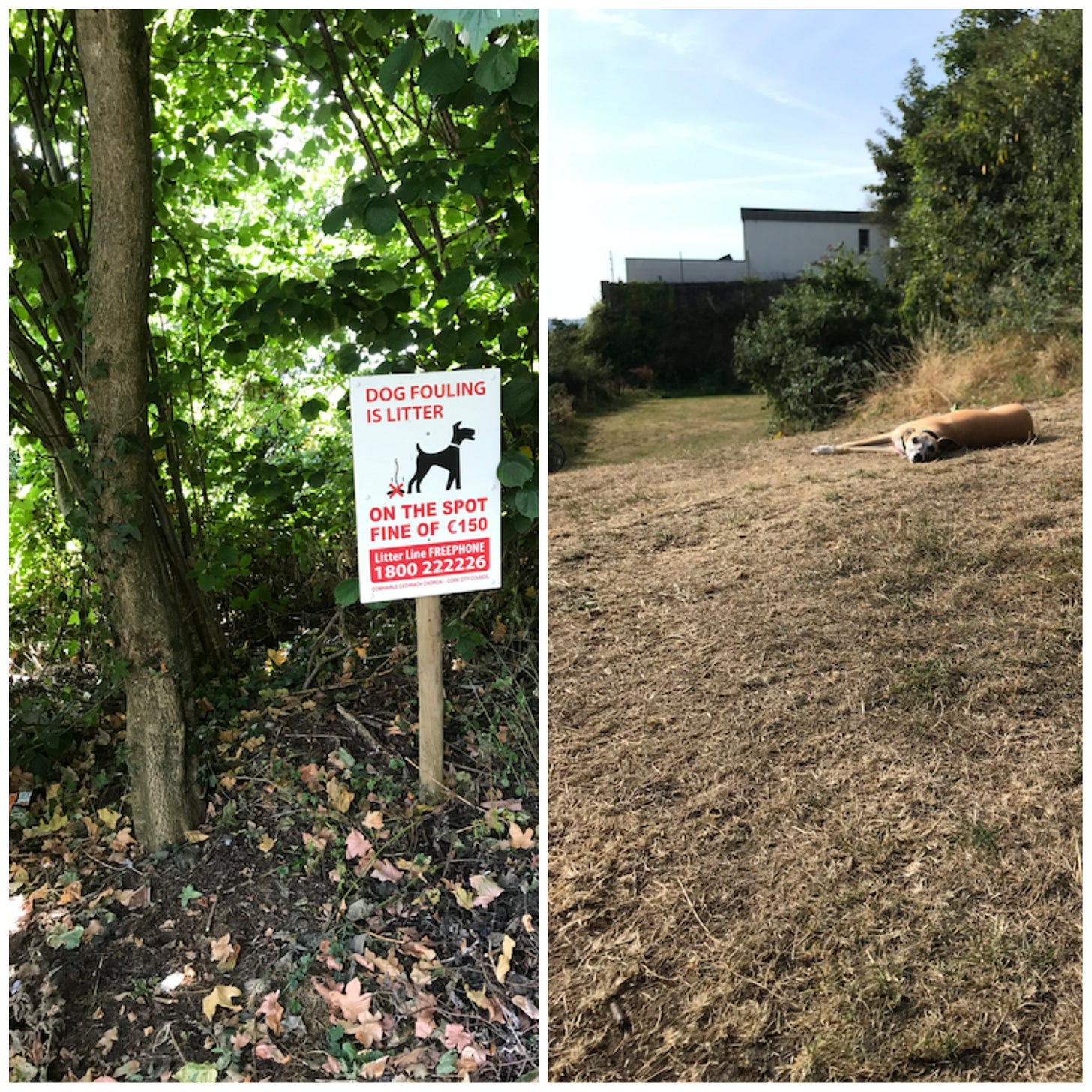
The possibilities of a community garden
About an hour into our interview, a few mothers arrive following their toddlers up the incline before we all converge on the sun-drenched grass and a picnic of sorts ensues while the group sets about planning the upcoming swap event. It’s all very easy going and to my mind ego less.
Not long after, Pat Lynch, a local man who lives in the terraced houses directly opposite the garden arrives and plonks down with the group. Pat was born and bred in St. Luke’s and he fills me in on the history of the quarry, and indeed St. Luke’s. He’s the local anchor to a group that morning which, while it’s small, it’s multinational.
As a resident Pat can only see and say good things about the progress they have made, especially as it was such an unloved site for so long.
Since the community garden’s launch in 2021, they’ve hosted regular yoga sessions, a composting workshop, a sign writing workshop, a street feast, which Carla said was a huge success, a Gathering, and many other various outdoor events.
The old quarry site has changed in many ways, most notably with the planters and the addition of new trees, but in other ways not at all. It’s still wide open, there’s no fences or gates, you could come by and easily rip all the plants out, but you could also come by armed with a bench designed and intended for the community, deposit it and be on your way.
“It’s like it was 30 years ago,” Carla says. “People are still able to come and do whatever they were before the planters were there.”
But now a new community is converging on the site, one that’s putting down roots, with each other and with nature. It’s a hardscrabble garden, but it’s surely one built with graft and through friendship.
“The people that have come have made connections,” Carla tells me, adding that that in itself is the possibly “the most valuable thing.”
“It’s the connections you make with friends or neighbours or people that otherwise you wouldn’t know, or people that don’t drink,” Carla says, referring to the pubs, such as Henchys just down the road at St. Luke’s Cross (which has donated to the community garden) and The Kerryman further up the road which were both closed for large parts of the pandemic and with them a communal space where many locals met and gathered.
But a new space is rising, a truly communal space, which can nurture and feed the locals of St. Luke’s, and one which was hiding in plain sight.
This Sunday, September 18, from 11am - 2pm, volunteers at St. Luke’s community garden will be holding a “Circular Day”, where you can pass on your clothes, shoes, accessories etc.
There will also be arts and crafts on display and for sale. And if you love locally it’s a chance to meet volunteers and get a tour of the garden.




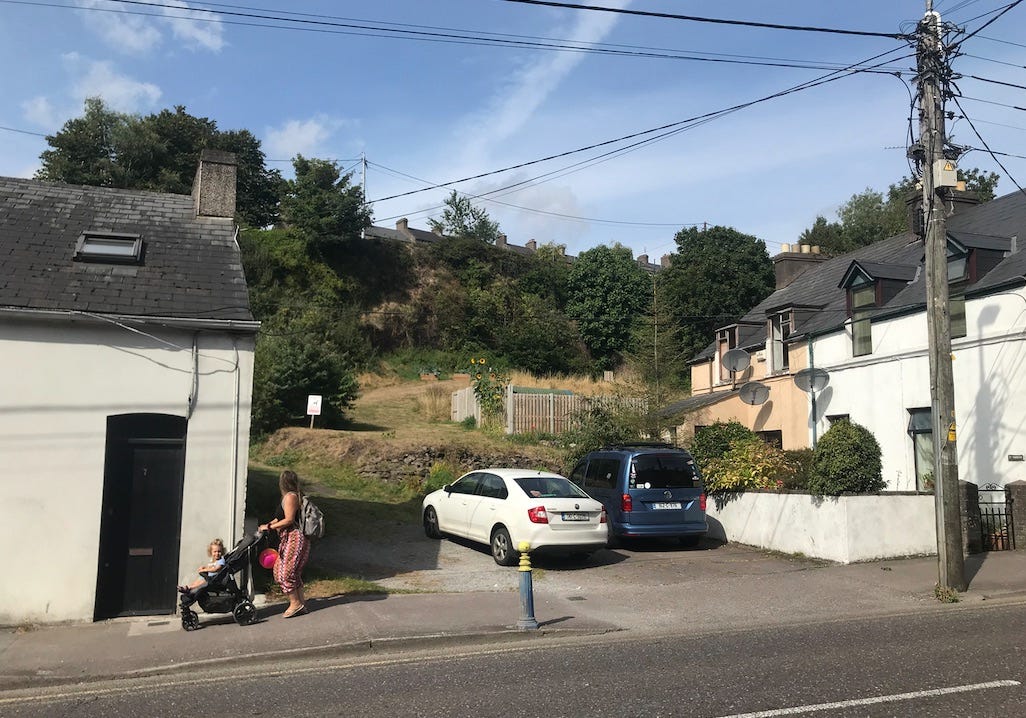
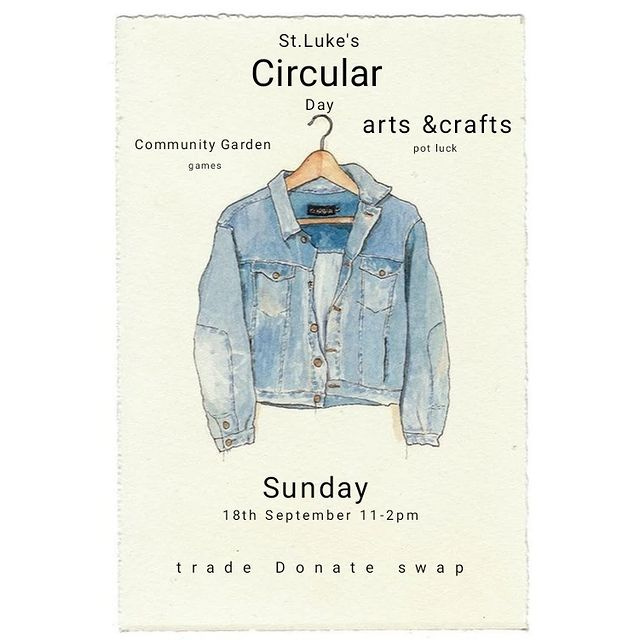
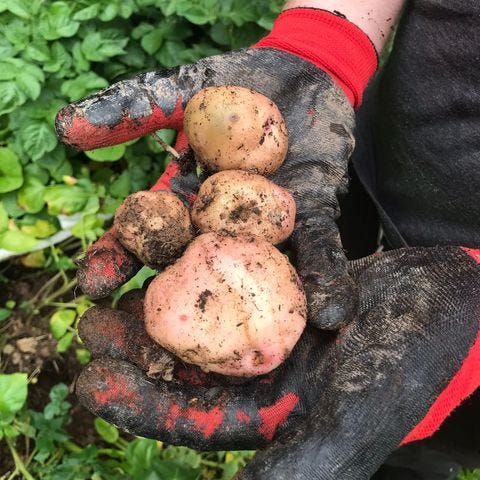
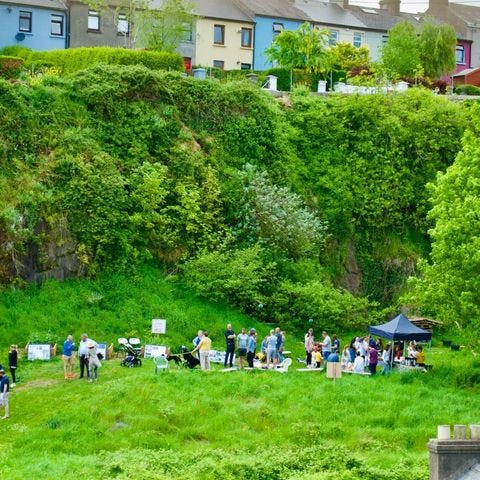

Can you take some veg and fruit home ??